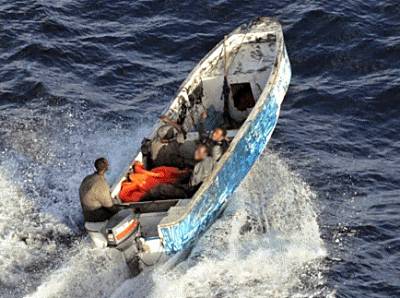Members of the RAF Regiment have found and destroyed a large cache of Taliban IED-making equipment in an operation conducted alongside Afghan and US forces.
Operation DISHATA PASHA (Pashtu for ‘backfoot’) was launched at dawn on Monday 6 February 2012, with RAF Regiment troops from II Squadron. The force also included warriors from the Afghan Army’s 3rd Brigade of 215 Corps, and US Marines from II Marine Expeditionary Force.
The troops deployed by US Osprey aircraft, with its unique tilt-rotor capability, and the operation resulted in the finding and destruction of a suspected insurgent IED cache close to Bastion Airfield in Helmand province. They also acquired a wealth of intelligence despite coming under fire several times.
The operation took place in the dashte (or desert) south of Bastion Airfield, whose protection is the task of II Squadron, operating as part of 3 RAF Force Protection Wing.
The dashte is a sparse landscape of rolling fields and scrub dotted with compounds and is increasingly being used as a harbouring area by Taliban forces who have come under pressure elsewhere as a result of successful coalition operations.
In this ‘bed-down’ location the insurgents have mingled with the local population, some of whom have Taliban sympathies, and their presence has seen attempts to increase poppy production in the area to fund their summer campaign.
Because of the sparse agricultural cover in the area during the winter, the insurgents have based themselves in compounds to fire on ISAF foot patrols. The string of IEDs that had been sown across approaches to the area, together with their ’stand-off and shoot’ tactics, was meant to stop ISAF forces from getting near.
Squadron Leader Jules Weekes, Officer Commanding II Squadron RAF Regiment, said:
“There is a certain dynamic to Taliban activities in this area. They operate in small teams of five or six, travelling by motorbike as their preferred guerrilla tactic. Part of this operation is to find out how ‘he’ does business.”
Several suspect compounds were targeted by the operation which saw the Ospreys land troops at two separate landing zones, either side of the wide Chah‑e Anjir wadi.
The dismounted troops — supported by a number of II Squadron Ridgback and Jackal armoured patrol vehicles and a specialist US Marine IED-clearance team — did not go unchallenged.
A number of small arms attacks were beaten off by the ground troops and heavier attacks were dealt with by Apache and Cobra gunships. One US Marines patrol, temporarily pinned down by heavy small arms fire, was supported by a show of force from an F‑18 which was sufficient to deter the insurgents.
As well as gaining vital intelligence the operation found a substantial IED cache in a compound, which contained a variety of bomb-making equipment, mines and several complete IEDs which were ready to be used against ISAF forces.
Wing Commander Jason Sutton, the Commander of 3 RAF Force Protection Wing, said:
“The open approaches to this area mean that it is hard to gain the element of surprise. However, by using the Ospreys to approach rapidly from an unexpected direction, the operation managed to achieve it.
“The RAF Regiment’s role is to defend air bases and those who operate from them, but the old adage of attack being the best form of defence remains as true today as ever. Targeting the insurgents and their supply networks takes the initiative away from them so that we can dictate the terms of the fight.
“It disrupts the insurgents’ attempts to attack Bastion and its vital air operations, denies them freedom of movement, and supports the Afghan National Security Forces as together we work to protect the population who live around the base.”
II Sqn RAF Regiment is a parachute-capable RAF infantry unit, which fights on the ground to maintain control of the air, and specialises in the protection of air bases and air operations.
The RAF Regiment is fully a part of the RAF and their organisation, equipment and training are designed specifically for their tasks. The RAF Regiment, formed in 1942, is 70 years old this year and has been deployed on operations continuously throughout this time. The nickname for RAF Regiment personnel is ‘Rock Apes’.
The role of RAF Force Protection Wings is to provide command and control of ground force protection at air bases in order to ensure air operations can continue unhindered.
The Wings typically provide on-base security operations delivered by the RAF Police, and off-base operations delivered by RAF Regiment squadrons, who operate in the large ground defence areas around bases.
No 3 Wing provides force protection for Bastion Airfield and Camp Bastion, working in conjunction with the US Marines who are tasked with protecting the adjacent Camp Leatherneck.
As well as having under its command II Squadron RAF Regiment and No 2 (Tactical) RAF Police Squadron, 3 Wing also includes an attached Royal Artillery element and a detachment of Tongan Defence Force personnel, who work with the RAF Police to provide perimeter and entry point security, and on other operations at Bastion Airfield and Camp Bastion.
3rd Brigade, 215 Corps, of the Afghan National Army, is based at Camp Shorabak, adjacent to Bastion, and is supported by UK troops from Task Force Helmand and Bastion.
Press release
Ministry of Defence, UK

 von
von 

